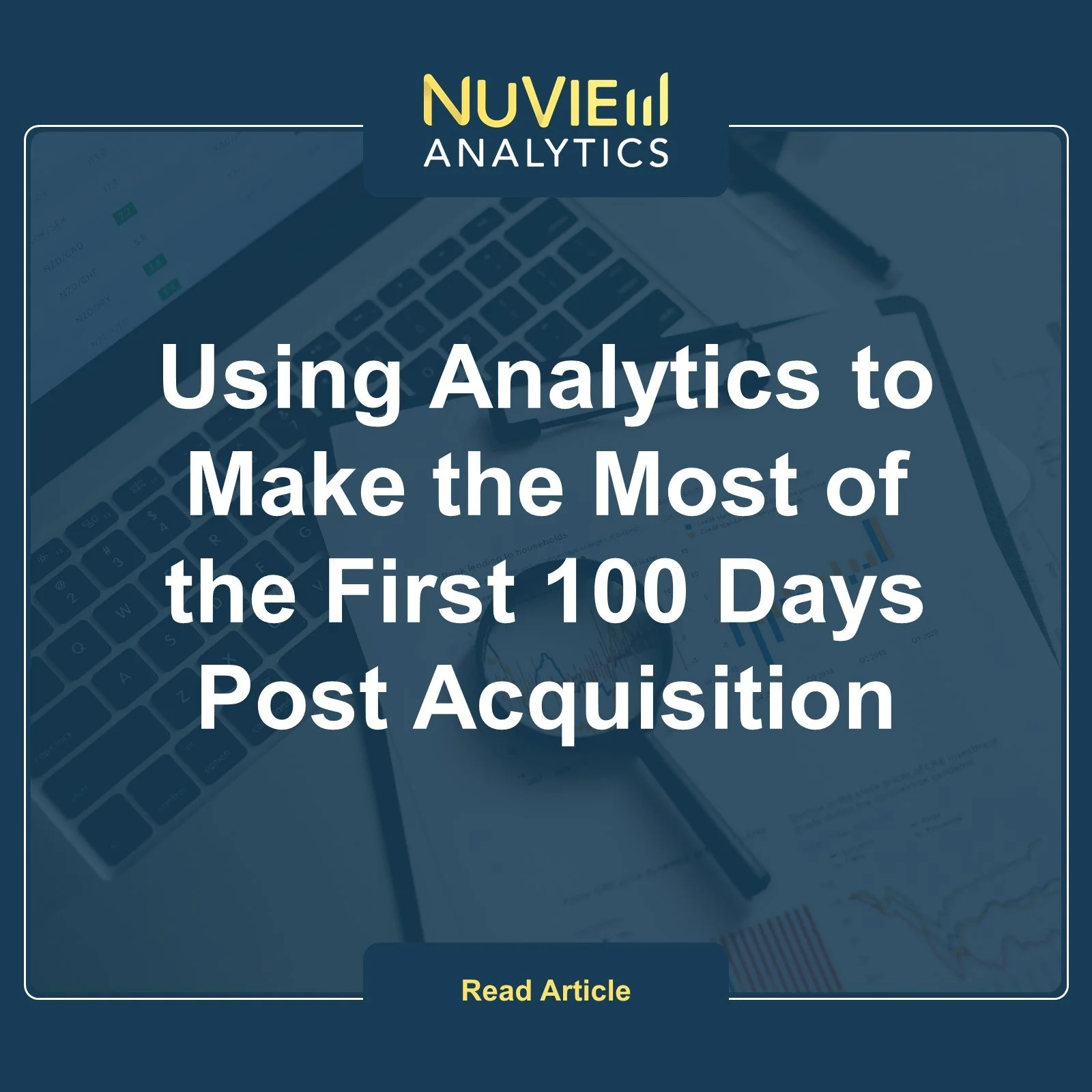Using Analytics to Make the Most of the First 100 Days Post Acquisition
The deal may have closed, but the relationship with your new portfolio company is just getting started—and the first 100 days of ownership are critical.
Ideally, the first 100 days are a time of action, during which the PE firm can work with its new acquisition to conduct activities such as:
Evaluate management
Assess operational needs
Streamline operations
Create an action plan to drive growth
These activities necessitate access to quality data, but unfortunately many port cos don’t have the infrastructure in place to deliver accurate, consistent information, resulting in a lost opportunity to address key issues and create a viable strategy. The sooner you can align reporting requirements and address data management issues, the sooner you can identify key value drivers and accelerate growth, maximizing the first 100 days and setting a positive tone for the rest of the ownership phase.
In addition to typical steps such as acquiring new talent, refinancing debt, and addressing technology issues, implementing analytics reporting is a vital part of a successful 100-day plan. For the acquired company, it provides a valuable opportunity to get data-based insight into its strengths and weaknesses. For the PE firm, it’s a chance to institute more efficient processes by applying a standardized set of metrics that it can use to evaluate performance across its portfolio. (For more details about the value that analytics can bring to an organization, take a look at this article.)
Here is a quick look at how An analytics implementation Can be implemented during first 100 days post acquisition:
Day 1-20
This is the time to get the lay of the land, analytics-wise. PE firms can use this period to evaluate their portfolio companies’ current systems and reporting to find out if they are leveraging data already, and if so, how effectively. A data gap analysis can identify missing or inadequate data, allowing you to see where gaps and deficiencies exist relative to what is needed to meet your objectives for the business.
Day 21-60
Once you understand the current state of your portfolio companies’ analytics capabilities, it’s time to create a roadmap that will get you up and running to your desired reporting level. This period is ideal for implementing an extract, transform, load (ETL) process to extract and cleanse data as needed. The ETL combines data from multiple sources into a data warehouse, turning raw data into useable information that gives you clear visibility into the other, non-analytics aspects of your 100-day plan, such as employee metrics and consumer behavior.
Day 61-100
With a process in place, port cos and PE firms can now use business intelligence and dashboarding tools to access consistent, accurate data. This in turn supports other aspects of the 100-day plan in key functional areas of the business such as sales, marketing, finance, and operations.
Make the Most of Your First 100 Days
The first few months of ownership are a pivotal time. With good planning and steps in place, a 100-day plan sets the stage for stability, growth, and a strong relationship with management. To include analytics as part of your 100-day plan, contact us to learn how we can create a customized program that aligns with your values and goals. We’ll get on a call to find out more about your firm, the type of companies you acquire, and what you want to accomplish with your 100-day plan. In turn, we’ll tell you how we can create a reproducible program that works across your portfolio. Get in touch today.

